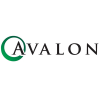Investment Research Summer Analyst Interview - Investment Research
Then, I had a video call with an associate, who asked me to explain beta, volatility, and 3 things going on in the news.
Then, I had a video call with the CIO, who asked me situational questions and what about investing interested me.
I think if you generally know about investing and market news, you'll be fine.
The firm seems pretty close knit, and the people there seem really smart. The hours are not bad at all either.
What is beta? What does a beta of 2, 0, and -1 mean? Give an example.
What are three current events that you could include in a weekly email to clients?
What does the standard deviation of stock returns represent?
Describe a time where you worked in a team-setting. Did you lead, or did you follow? What challenges arose, and how did you resolve them?
Do you know how to use VBA? Have you made macros and pivot tables before?





or Want to Sign up with your social account?